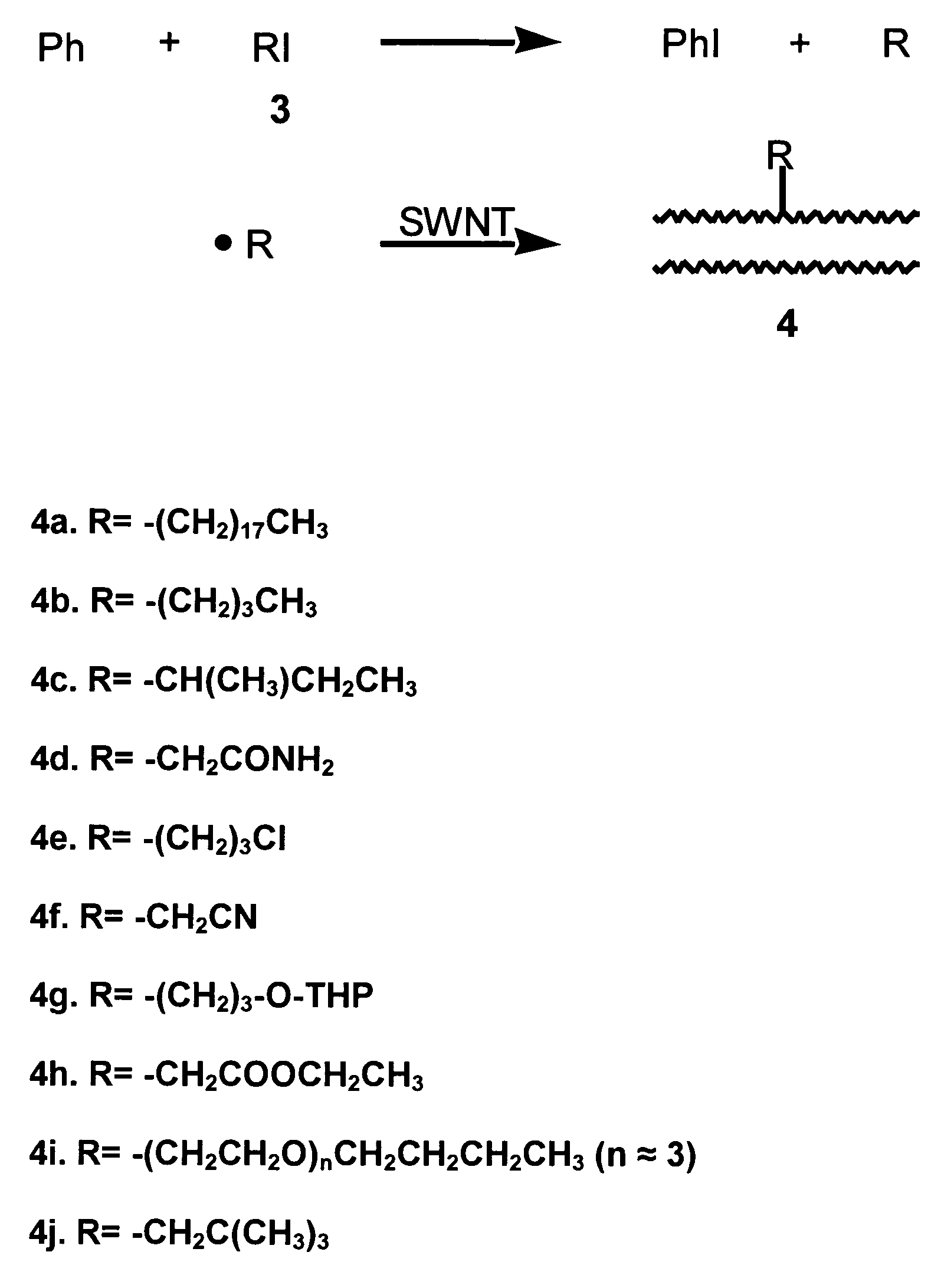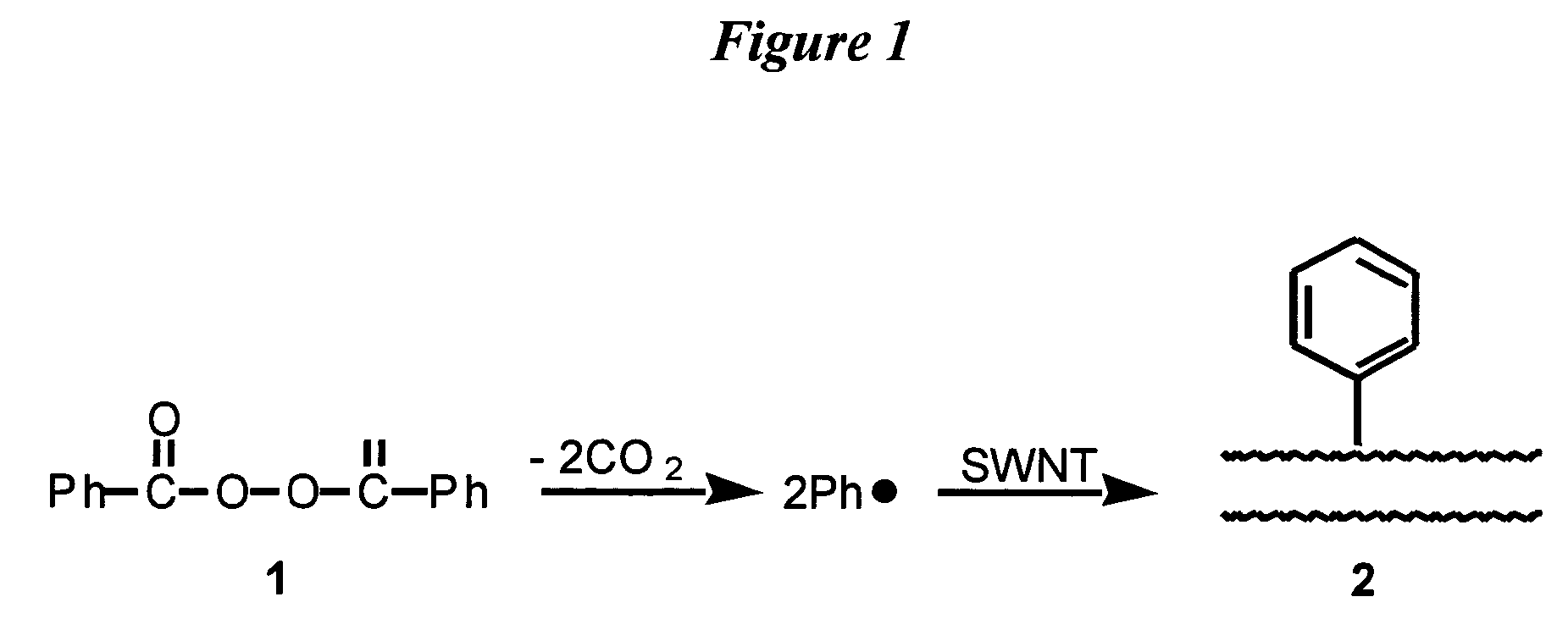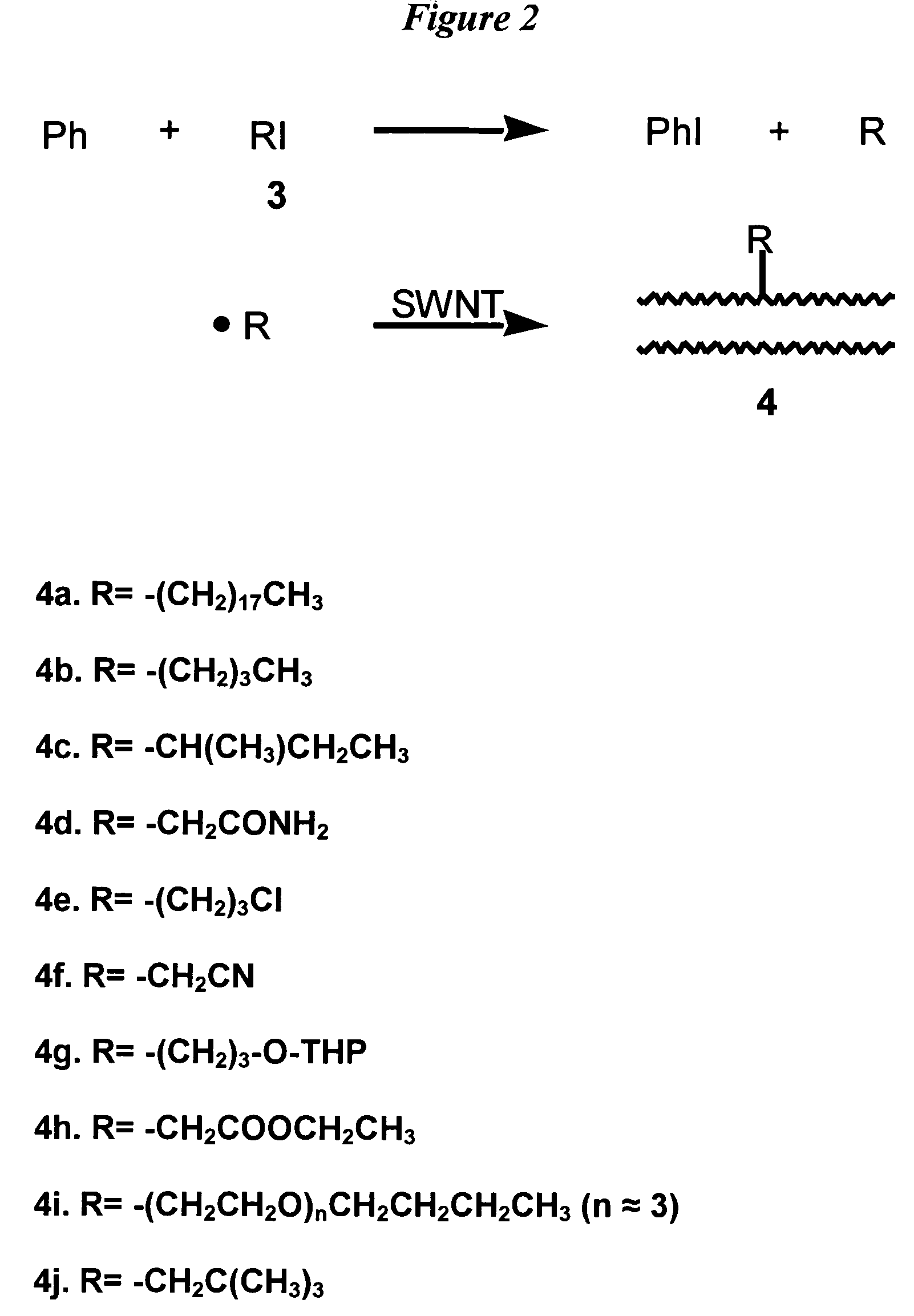Method for functionalizing carbon nanotubes utilizing peroxides
a technology of carbon nanotubes and peroxides, applied in the field of carbon nanotubes, can solve the problems of sidewall functionalization of carbon nanotubes, nanotube walls, and is much more difficult to achieve than open end-functionalization, and achieves the effects of enhancing materials' properties, high dispersibility, and contributing to the strength and modulus of composite materials
- Summary
- Abstract
- Description
- Claims
- Application Information
AI Technical Summary
Benefits of technology
Problems solved by technology
Method used
Image
Examples
example 1
[0084]This example describes the procurement, preparation and purification of the single-wall carbon nanotubes. HIPCO® single-wall carbon nanotubes, having an average diameter of about 1 nm, were obtained from Rice University (HIPCO is a trademark registered to Carbon Nanotechnologies, Inc., Houston, Tex.) To remove iron, used as a catalyst, the nanotubes were purified using a gaseous wet air oxidation followed by an aqueous hydrochloric acid rinse according to the procedures of Chiang, I. et al. J. Phys. Chem. B, 2001, 105, 8297–8301 (“Chiang”). Following the purification, the nanotubes were annealed at 800° C. for 2 hours in argon.
example 2
[0085]This example demonstrates a procedure for functionalizing the sidewalls of single-wall carbon nanotubes using the acyl peroxide, benzoyl peroxide.
[0086]Purified SWNT (50 mg) was sonicated in benzene (65 ml) for 2 hours to form a SWNT suspension. 6.7 g benzoyl peroxide, which decomposes under mild conditions (75–80° C.) to form carbon dioxide and phenyl radicals, as shown in FIG. 1, was added to the SWNT suspension. The heterogeneous mixture was stirred under argon at 70–80° C. overnight to decompose the benzoyl peroxide and form sidewall-phenylated-SWNT (Ph-SWNT). During the heating, the benzoyl peroxide decomposed to phenyl radicals and carbon dioxide, and the phenyl radicals attached to the sidewalls of the SWNT to form sidewall-derivatized phenyl-SWNT (Ph-SWNT). 50 ml ethanol was then added to precipitate the dissolved Ph-SWNT. The mixture was then filtered through a 0.2 μm PTFE (polytetrafluoroethylene) filter and washed with ethanol. The nanotubes that were collected from...
example 3
[0089]This example demonstrates a general method for functionalizing the sidewalls of single-wall carbon nanotubes with R groups other than phenyl groups using benzoyl peroxide as an initial source of free radicals that react with R-iodides. To attach R groups other than phenyl to the SWNT sidewall, R-iodide, (RI) (2.5 equivalents per mole of benzoyl peroxide) was used with benzoyl peroxide. The R groups used in this example are given in Table 1, shown below. The corresponding R-iodide compounds were obtained from Aldrich, except for the iodo derivative of poly(ethylene glycol)-n-butyl ether (See 4i in Table 1), which was prepared as follows according to procedures adapted from S. Arndt, et al., Chem. Eur. J. 2001, 7, 993–1005. To a solution of imidazole (3.3843 g, 49.71 mmol) and PPh3 (5.214 g, 19.88 mmol) in 110 ml CH2Cl2 at 0° C., iodine (5.467 g, 21.54 mmol) was added. The solution was stirred for 5 min, and poly(ethylene glycol)-n-butyl ether HO(CH2CH2)m—CH2CH2CH2CH3 (3.4135 g,...
PUM
| Property | Measurement | Unit |
|---|---|---|
| diameters | aaaaa | aaaaa |
| diameters | aaaaa | aaaaa |
| diameters | aaaaa | aaaaa |
Abstract
Description
Claims
Application Information
 Login to View More
Login to View More - R&D
- Intellectual Property
- Life Sciences
- Materials
- Tech Scout
- Unparalleled Data Quality
- Higher Quality Content
- 60% Fewer Hallucinations
Browse by: Latest US Patents, China's latest patents, Technical Efficacy Thesaurus, Application Domain, Technology Topic, Popular Technical Reports.
© 2025 PatSnap. All rights reserved.Legal|Privacy policy|Modern Slavery Act Transparency Statement|Sitemap|About US| Contact US: help@patsnap.com



